
A Blitz on Ivy
Common ivy (Hedera helix) is a vigorous, self-clinging climber with three- to five-lobed, glossy, evergreen leaves, often with pale green veins, and sometimes some reddish or bronze colours in autumn. Mature plants produce bushy, non-clinging branches with diamond-shaped leaves, and small, nectar-rich, greenish-yellow flowers in clusters of rounded heads in autumn, followed by black berries in winter. It can be useful to gardeners as a fast-growing ground cover. The problems begin once the ivy encounters a vertical surface. Once the stems of ivy find a surface to attach to, the plant modifies its leaf-node root hairs to become attachment points. The plant increases the surface area of these modified root hairs and excretes a kind of “glue” from the root hair to bond to the surface it’s climbing.
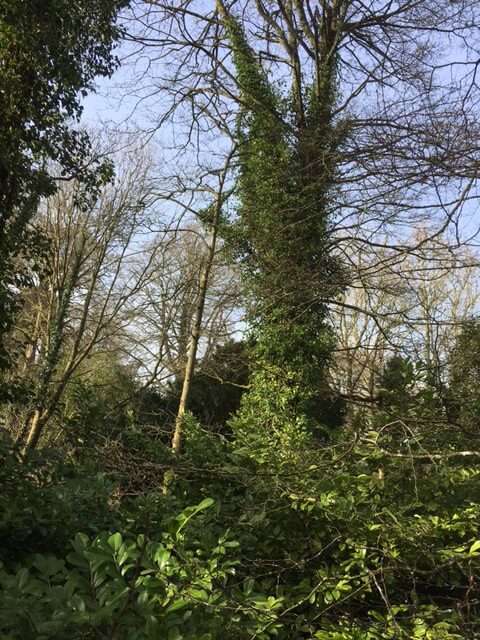
There are a lot of trees closer to the edges of Brockhampton Park’s property to the south and east that have suffered from ivy infestation for decades. Recently, resident Peter Long decided to take on the task of dealing with the problem at a practical level in order to get the job done and save the house money. With the Board’s agreement, he took the problem into his own hands in the shape of a small, battery-fueled chainsaw.
Contrary to popular belief, English ivy is not a parasitic plant. It’s nutrients and moisture come from the root and not from its attachment to walls or trees. Furthermore, it does not always compete with trees for those essentials, as its root system is often at a different level in the soil. Unlike parasitic mistletoe, the attachment points of ivy do not penetrate tree bark, they merely latch onto micro crevices and convolutions in the bark’s surface. What’s more, ivy creates a suitable habitat for many wildlife species, such as butterflies, pollinating insects and birds. This is especially the case during the cold winter months when hiding places out of the elements are hard to come by. Ivy is, in fact, a helpful creeper for gardens that are ‘wildlife friendly’.
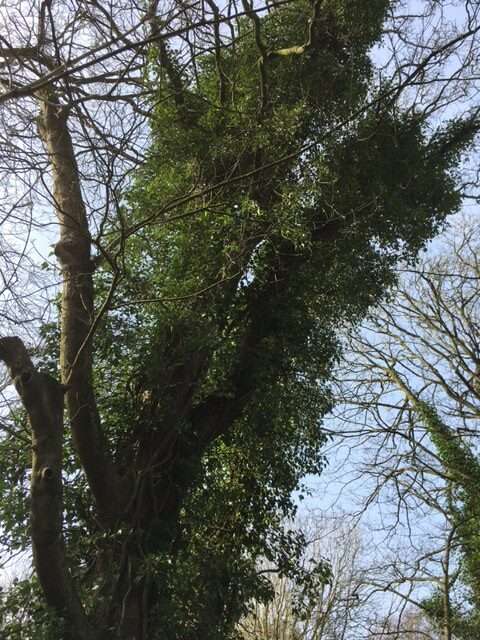
However, you can have too much of a good thing. The reason ivy climbs trees and structures is to reach up to more advantageous locations for photosynthesis and reproduction. Once in the canopy of a tree it produces its flowers and berries. The problems that ivy creates are not that it saps the lifeblood of the tree, they rather stem from its cloaking of the tree.
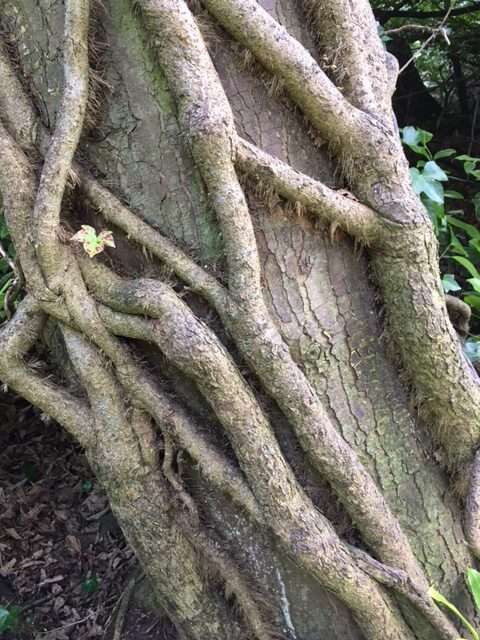

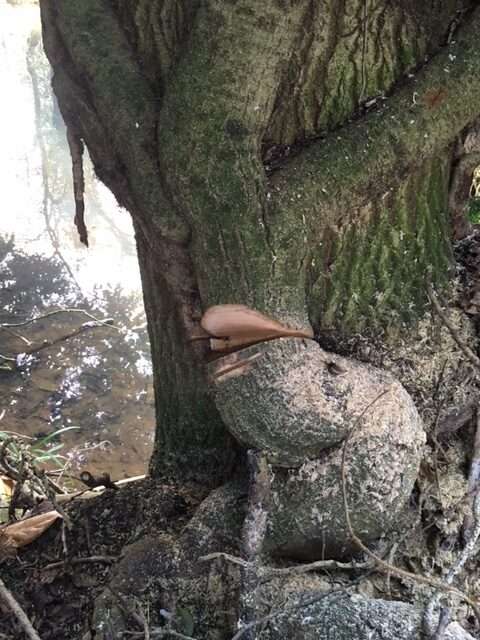

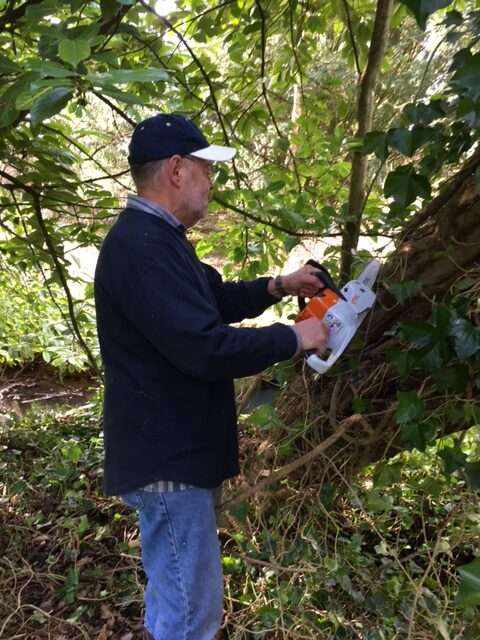
Ivy that has ascended into the branches and upper parts of a tree creates a profile that increases its exposure to wind damage. The sheer weight of the ivy, itself, can overcome the strength of boughs or increase their susceptibility to wind damage. Its closely spaced leaves block the sunlight that the tree needs for its own photosynthetic processes. If the ivy infestation has become so extreme as to interfere with the tree’s uptake of moisture and nutrients and, moreover, inhibits its photosynthesis, it is very effectively weakening the tree and rendering it more open to disease and similiar factors. Rodents and pests that adversely affect trees can, just as easily, occupy the homes it creates for beneficial wildlife.
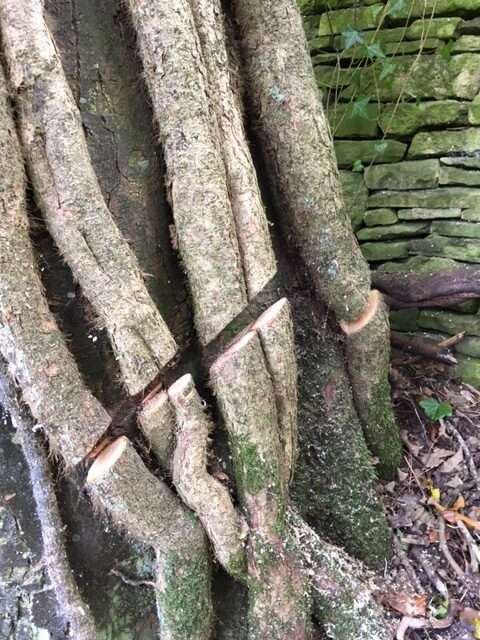
As you will see from the accompanying photos the ivy at Brockhampton has reached that stage of infestation and far beyond; in some cases its ‘stems’ are several inches thick. Killing the ivy by severing its stems is the commonest method to rid the tree of the worst of its burden. The stems are best left as pulling at them can damage the bark of the tree. The ivy’s leaves will turn brown and eventually wither and die off, reducing the wind exposure profile and exposing more of the tree’s own leaves to sunlight; as the stems dry out, the burden of their weight is reduced. Although dead, the remaining stems will still provide some shelter for wildlife of all kinds.
____________________________
